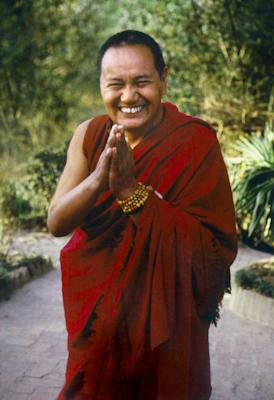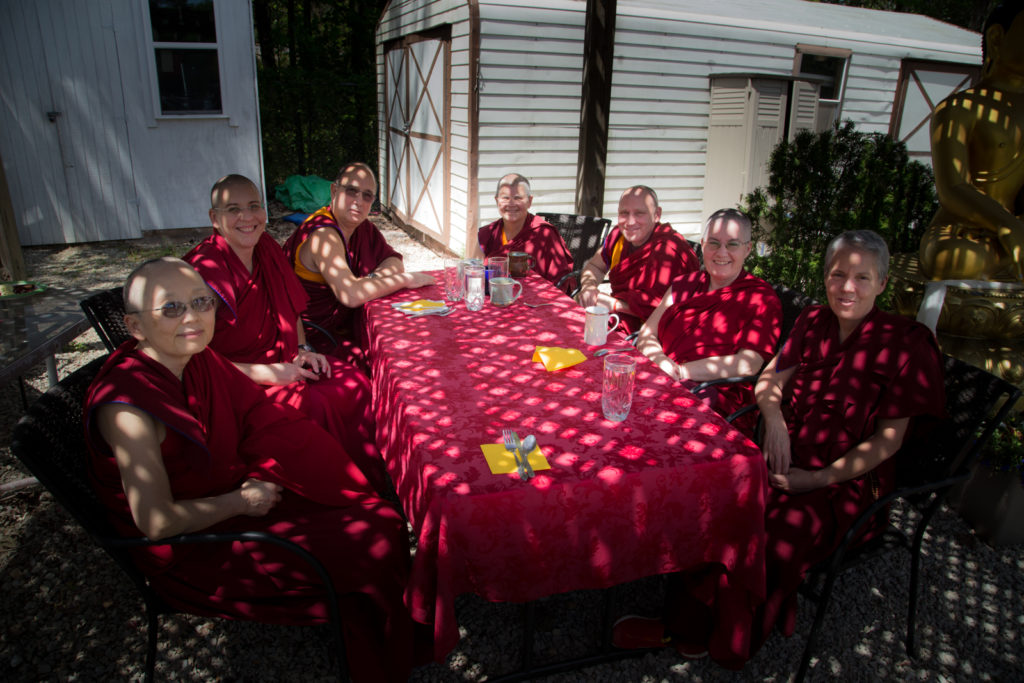The community that I consider to be a religious group that promotes traditional Buddhist ideals in the United States would be the Bhavana Society, which is located in Hampshire County, West Virginia. The discovery and establishment of this society took many years in the hope of building a new Buddhist retreat in America where many people could come to receive knowledge about the religion of Buddhism. Firstly, the founder of the Bhavana Society is an Indian man named, Bhante Gunaratana along with his friend and previous student Matthew Flickstein. Bhante Gunaratana is from Sri Lanka in 1975 he traveled to the Buddhist Vihara in Washington where he would continue to practice meditation rituals. The Vihara retreat likely had a profound influence on Bhante which eventually motivated him to start his own American Buddhist monastery. Also, his occupation of giving numerous talks on the Buddha dharma at universities, high schools, and organizations only proved his dedication to the religion. Although satisfied with public speaking, Bhante began to question if simply discussing the order and law of the cosmic world would be enough for his pupils to learn from. He soon convinced himself that personal experience would be the correct way to fully understand the workings of Buddhist meditation. A personal experience could demonstrate how to gain insight into the Buddhist world and provide healing to any person willing to accept a calamity.
Officially, the Bhavana Society was formed on May 13th, 1982, in West Virginia but funds needed to purchase land and establish a permanent building within West Virginia were not earned until the 1990s. The amount of $18,000 was left in Bhante’s name, which he used to pay for land and to construct a building that could host his new Buddhist community. Donations provided by members of the Washington Buddhist Vihara Society along with those who had recently joined Bhavana helped with Bhante’s project. In the society’s early days, Bhante seemed to heavily rely on other American Buddhist societies to keep construction running and to keep expenses on the West Virginia land. To keep up with payments, Bhante took it upon himself to speak on traditional Buddha teachings in Buddhist societies across the United States, encouraging many to help him in his vision of creating a religious retreat center. He possessed a talent for appealing to a person’s compassion and understanding by using the Buddha dharma as his guide. Bhante managed to convince those that the teachings of universal love, should be enough to garnish support for an additional monastery in the name of Buddhism in America. Fortunately, Bhante lived to see the end of construction on his West Virginia land in 1994, where buildings that featured idolization of Buddhism took root in the heart of a secluded forest. As we would imagine, Bhante was pleased to put an end to his struggle and form a proper monastery that encouraged the education of Buddhism. The opening ceremony which was conducted shortly after the final building was completed, hosted three hundred guests of whom some were long-term Buddhist monks and nuns.

Bhavana Society tends to focus on the mediation aspect of the Buddhist religion which helps in both mental and physical health that a person may wish to grow stronger in. The specific meditation practice that is most prominent within the society is the Theravada Forest practice, one of the oldest forms of Buddhism that centers around mindful insight. Dated to around 200 BC in Sri Lanka, Theravada incorporates forest retreats into the principles of Buddhist Mindfulness. Unfortunately, Theravada Buddhism has lost popularity in modern Asian regions due to its necessity of spending many hours in complete seclusion and being made to live in nature for an extended period than most people are used to. In the United States, however, an attempt to revive older forms of Buddhism was made possible by those who wished to establish religious monasteries in America. Since most people in the United States are unfamiliar with the Buddhist religion, people who wish to promote their native religion, such as Bhante, have the opportunity to educate and promote aspects of Buddhism that have dwindled in relevancy. Despite its downfall in its traditional homeland, Theravada seeks to encourage its followers to obtain Sila, the body’s self-restraint, samadhi, the ability to develop deep concentration, and Panna, having wisdom into the mind’s true nature. To achieve these three rules of the Buddhist Eightfold Path, Bhavana society offers meditative retreats that allow the person to understand himself and discover his life purpose once again. Since West Virginia is surrounded by dense forests, the society will be able to fully experience the traditional path of Theravada because of its choice of location and non-metropolitan setting.

As an alternative, the members of its society can decide if they would like to participate in the forest retreat in small groups, but private walks taken in solitude are highly recommended by the society. Forms of group collaboration are discouraged in the Bhavana society since it has the potential of ruining concentration after attempting to only focus on yourself and your mental well-being. The temptation to socialize with fellow members of society during moments where silence is expected, could create problems with the meditative experience and discourage the person from achieving Sila, Samadhi, and Panna. For a layperson who is a part of the organization, it is especially important to live a secluded and monastic lifestyle for a fixed amount of time before being ordained as a Buddhist monk.
The Bhavana society seems strict in their adherence to the Theravada meditation practice, but it should not be interpreted that other American Buddhist monasteries that follow different religious values are shunned completely. They are open to representatives from American Buddhist communities to speak on ethical values or the promotion of new forms of Buddhism such as the Mahayana practices. Although religiously tolerant, Bhavana will always prove to be a strong participant in Theravada Buddhism. In addition to their traditional beliefs, the society itself takes pride in the issue that Theravada Buddhism is practiced more in the United States rather than in Asia because of the high chance that other nationalities could be exposed to Buddhism.
The Bhavana Society hopes to educate the American public on the study of Buddhism through daily lectures given by higher representatives of the society and calming rituals that follow tradition. To ensure the productivity and timing of the rituals offered within the community, each member is required to live by the traditional lifestyles of Buddhism that is still active in Asia. For example, Bhante has made it a rule that a person should only eat after noon each day and forbade cell phones from being used while on a meditative retreat or during prayer services. Members are also not permitted to wear shoes inside the Bhavana temple or any other buildings to protect the purity aspect of their religion. To maintain the secluded lifestyle the Bhavana society had chosen for themselves, local donations have been made to keep up with funds that are responsible for land payments and necessary commodities. The donations are usually contributed by Americans who may have heard of the society and the ideals they work to promote. Personally, money is also given to the Buddhist organization by its own members who are determined to see Bhavana financially stable and relieved from social pressures that could interfere with its internal peace. Without receiving the proper money required to keep the society from closing, members fear that its sudden closure could prevent those who live in West Virginia from engaging in Buddhist rituals.
For the Bhavana society’s demographic, the majority of its members are American Caucasians who chose to learn about Buddhism through a hands-on experience that selected readings could not provide for them. The American members, most likely were never exposed to any forms of Asian religions in their lives and only recently came to recognize Buddhism as a religion to be taken seriously similar to Christianity, despite being of another nationality. Educating Americans about the Buddhist religion seems to be one of the greatest pride that the society is pleased over, but mentioning their Indian or Asian descent members is worth noting as well. As said before, Bhante, the founder of Bhavana, is from India himself and has offered those who are from the Asian region to come to the United States and join his Buddhist society after its establishment in 1982. A number of Asians were already Buddhist monks or lay people eager to contribute to the education of their American counterparts through their years of extensive Buddhist knowledge.
Overall, the Bhavana Society is a fairly recent Buddhist community in West Virginia that goes against the expected role of trying to relate to newer generations by promoting twentieth-century ideas about the Buddhist Religion. Theravada meditation is at the core of this Buddhist society which all members hope that followers of Buddhism will practice at least once in their lives. The bond Bhavana members form with one another, despite rules of seclusion, contributes greatly to the dharma principle in that a person should revolve around the sense of compassion for other beings.
Citations
Bhavana Society
Author
Amiyah Wright
























